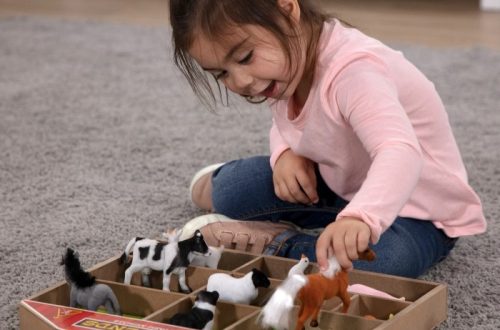Part 1: The Development of Grasping Skills in Babies
The ability to grasp and hold objects is a significant milestone in a baby’s development. It marks the beginning of their exploration and interaction with the world around them. Understanding when and how babies grasp toys can provide insights into their motor skills and cognitive development.
Point 1: Reflexive Grasping
During the first few months of life, babies exhibit reflexive grasping. This means that when an object is placed in their palm or touches their fingers, they automatically close their hand around it. This reflex is an innate response and does not require conscious effort or intention from the baby.
Point 2: Voluntary Grasping
Around three to four months of age, babies start to develop voluntary grasping skills. They become more intentional in reaching for and grasping objects. Initially, their grip may be less coordinated, but with practice, they refine their motor skills and gain more control over their hand movements.

Part 2: Different Types of Grasps
As babies develop their grasping skills, they begin to utilize different types of grips when interacting with toys and objects. These grasping patterns evolve over time and reflect the progression of their motor abilities.
Point 1: Palmar Grasp
In the early months, babies predominantly use the palmar grasp. This involves wrapping their whole hand around an object, using their palm and fingers to secure it. This grasp provides stability and allows them to hold larger toys and objects.
Point 2: Pincer Grasp
Around eight to ten months of age, babies start to develop the pincer grasp. This involves using their thumb and index finger to pick up and manipulate smaller objects. The pincer grasp allows for more precise and controlled movements, facilitating the exploration of objects with greater intricacy.
Part 3: Factors Influencing Grasping Skills
Several factors contribute to the development of a baby’s grasping skills. Understanding these factors can help caregivers support and encourage their baby’s motor development.
Point 1: Motor Development Milestones
Grasping skills are closely linked to a baby’s overall motor development. As they gain strength, coordination, and body control, their grasping abilities improve. Encouraging tummy time, providing opportunities for reaching and grabbing, and offering a variety of toys can all contribute to motor skill development.
Point 2: Sensorimotor Exploration
Babies learn through their senses, and sensorimotor exploration plays a crucial role in the development of grasping skills. Providing babies with toys of different shapes, textures, and sizes stimulates their curiosity and encourages them to reach out and explore their environment.
Part 4: Supporting Grasping Skills Development
Caregivers can play an active role in supporting and promoting the development of their baby’s grasping skills. By providing a nurturing and stimulating environment, caregivers can help babies refine their motor skills and explore the world through their senses.
Point 1: Offering Engaging Toys
Selecting age-appropriate toys that are safe and engaging can enhance a baby’s grasping skills. Toys with various shapes, textures, and sizes can provide opportunities for babies to practice different grasping patterns and strengthen their hand muscles.
Point 2: Encouraging Active Play
Engaging in interactive play with babies encourages them to reach for and grasp objects. Caregivers can hold toys just out of reach, encouraging babies to extend their arms and develop their grasping skills. Gradually increasing the complexity of objects and challenging babies to grasp smaller items can further support their motor development.
In conclusion, the development of grasping skills is an important milestone in a baby’s motor and cognitive development. From reflexive grasping to voluntary grasping, babies progress through different types of grasps that reflect their growing motor abilities. Factors such as motor development milestones and sensorimotor exploration influence the development of grasping skills. Caregivers can support this development by offering engaging toys and encouraging active play. By understanding the progression of grasping skills and providing a nurturing environment, caregivers can facilitate their baby’s motor development and help them explore and interact with the world around them.


